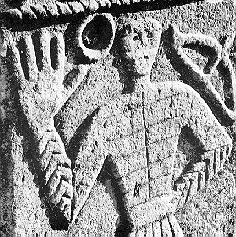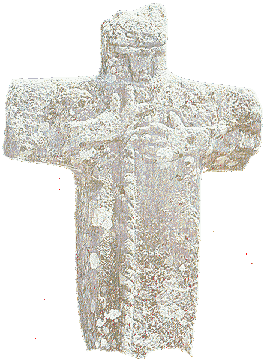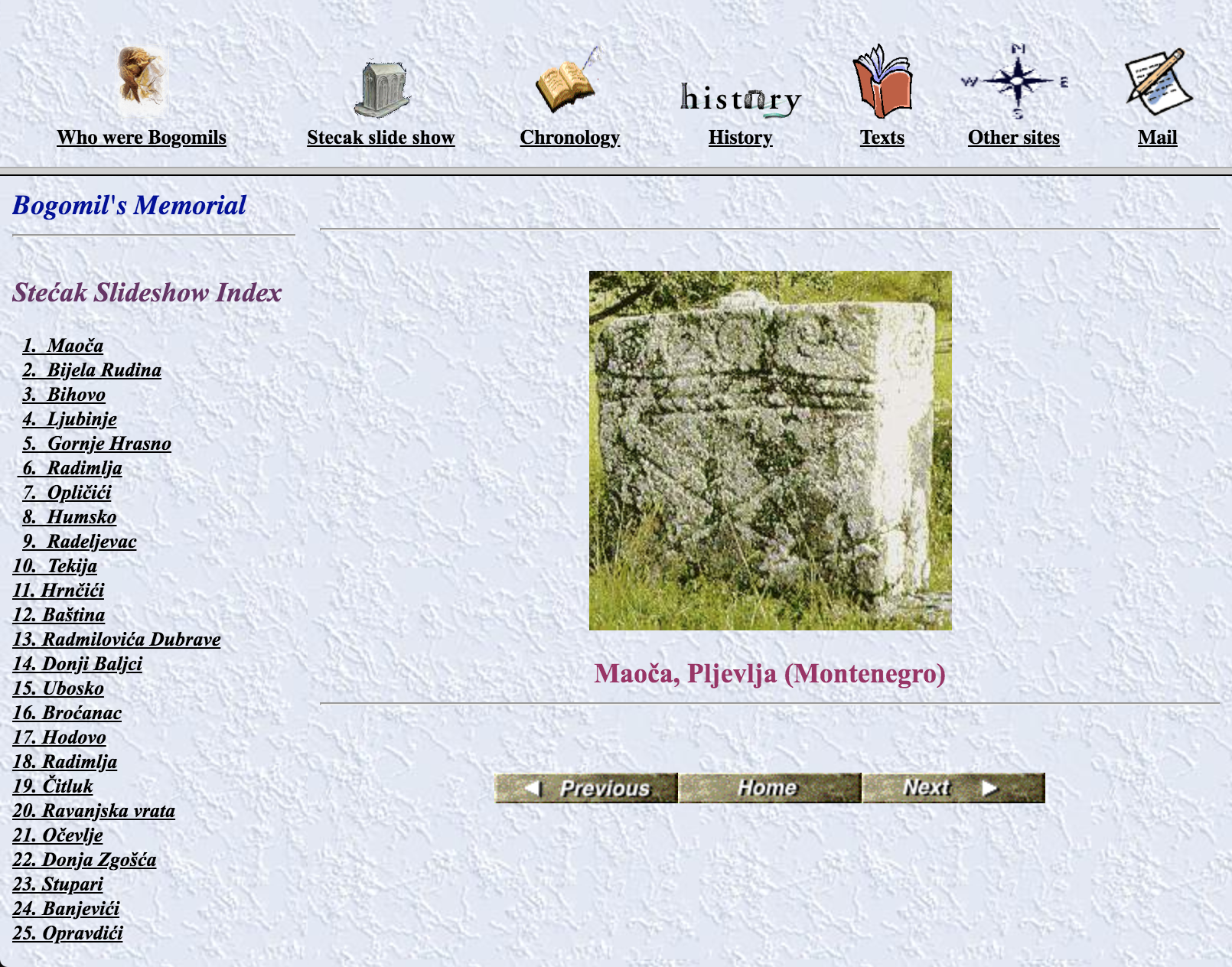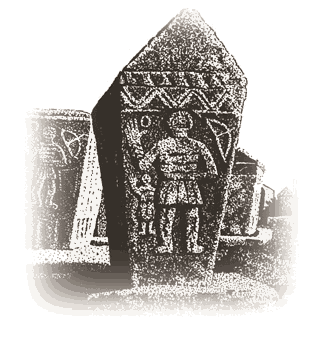

I had never heard of Bogomils before I came across this website located in the Athens neighborhood of GeoCities, and now available at http://www.oocities.org/athens/troy/9892/. Entering this page felt like stumbling upon an abandoned memorial site in a foreign country, dedicated to a part of history you've never heard anything about. And actually that is exactly what it is, at least for me, since I was not familiar with the religious history of Bosnia and Herzegovina. Perhaps I would never have learned anything about this subject if I didn't find Bogomil's Memorial.

The history of Bogomilism is not really well explained on Bogomil's Memorial, to be honest, at least not for an uninformed layperson. Under the page titled Who were Bogomils, the unnamed narrator writes:
In medieval Bosnia appeared a gnostic movement known as Bogomilism. They called themselves only "Christians" or "Krstjani" (in the Croatian language).
On the History page you find a "Short History of Bosnian Bogomils" which is not exactly short at 2,100 words.
My best theory to explain the enigmatic and confusing nature of Bogomil's Memorial is that it was probably designed for a small, likely academic audience of people already familiar with medieval religious history. Maybe it was even part of a student's research work — there are quite a few pages full of very dense texts about Bosnian history.
It's hard to even guess why this website was created because we don't get any hints about who its creator was. (Their email is simply bogomils@yahoo.com.) In any case, Bogomil's Memorial is a very beautiful place. It has the feeling of being a physical location, to me at least. A Bogomil museum.

The best part of Bogomil's Memorial is the Stećak Slideshow. I had to do some research to find out what a Stećak (plural Stećci) is because it is not stated on the page. The first time I visited Bogomil's Memorial, I did not mind this, and I did not bother to Google for more information, because the images are so beautiful that I wanted to just enjoy them as they are. If you are also in that kind of mood today, I recommend to stop reading now and just go view the slideshow.

There is some mystery surrounding Stećak. Essentially, they are stone monuments/tombstones found in Bosnia and Herzegovina and also in some neighboring countries. Dated from the 12th to 16th century, they are associated with Bogomilism. Bogomilism, if you are curious about it, actually has a fascinating Wikipedia entry, part of which I will share here:
Bogomilism was a Christian neo-Gnostic or dualist sect founded in the First Bulgarian Empire by the priest Bogomil during the reign of Tsar Peter I in the 10th century. ... The Bogomils were dualists or Gnostics in that they believed in a world within the body and a world outside the body. They did not use the Christian cross, nor build churches, as they revered their gifted form and considered their body to be the temple.

After exploring all the links on Bogomil's Memorial, I discovered that there is one link on a page titled Christian Gnosis which leads you to a second webpage (!), a hidden site by the same anonymous creator, on which sadly all the links seem to be broken. Sometimes this happens on old GeoCities pages. However you can still view the Gnostic Resources Home Page at the following link: https://www.oocities.org/athens/troy/9892/gnosis.html.
I wanted to share Bogomil's Memorial not only for the beautiful graphics, but also because it offers a good example of a non-commercial website created solely to share information about a niche topic. Perhaps its creator actually only made the website as an archive to compile their personal research on Bogomilism. Or perhaps they hoped that it would somehow find its way onto the computer screens of unknown people, in diverse parts of the world, who were also intrigued by the curious history of Stećak and of the Bogomil sect. If that was their hope, at least it has been realized now, as we are browsing through these pages together.